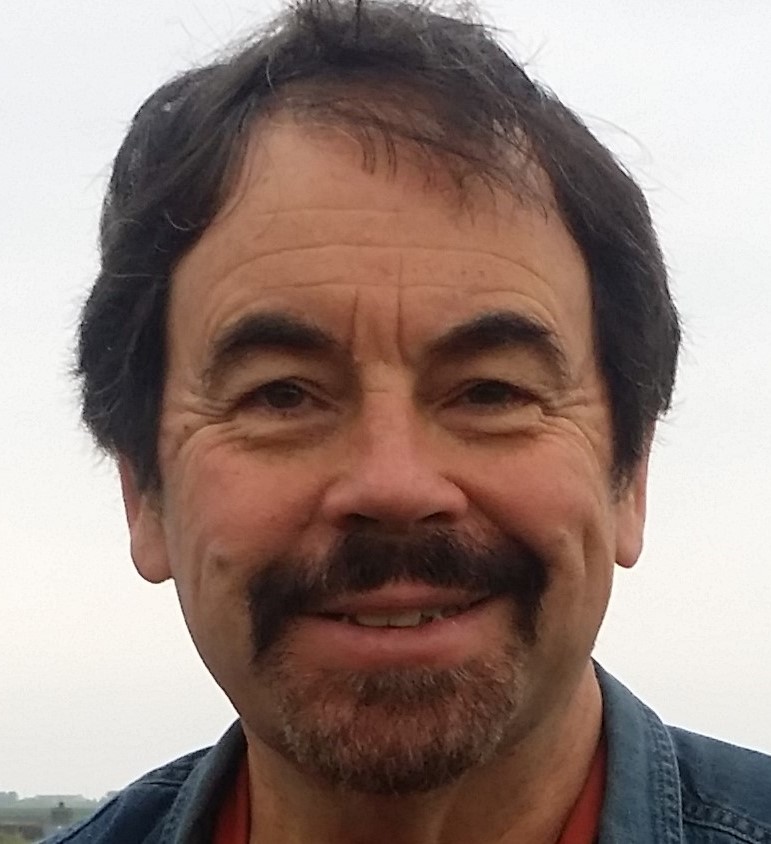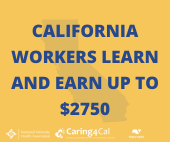[Editor’s note: this article is based on a recorded video interview with Barbara Karnes. To see the full conversation in her own words, click here.]
For longer than most of us have been in home care, in fact, for longer than some home care workers have been alive, Barbara Karnes has lived and breathed hospice. From young nurse in 1980 to administrator to author and video producer, she continues into her mid-80’s to teach young nurses and distraught families about the dying process and the grief experience.
Last autumn, however, she was suddenly transported to the other side of the classroom. The death of her husband, a longtime chain smoker, introduced her to cancer, hospice, death, and grief from the perspective of the heart, after decades of dealing with it only intellectually. Barbara graciously agreed to speak with me late last month. Having been through the experience myself, I thought it best to wait a few months after his death to extend my interview invitation.
“I have always been the kind of person who operates out of the head more than the heart,” she began. “Putting on the shoes of a spouse caregiver, and suddenly living what I have taught for decades, put a whole different perspective on it. Even though I knew better, I sometimes did things I tell people not to do.”
She told me about the urge to do those things. “I kept pushing food and the need for nutrition on him,” she remembered. “Then, one day, I finally realized I was trying to keep him alive while his body was trying to die. And with that realization, I began to do what I always recommend everyone else do, always offer and never force.”
“As a professional, I observe the dying and grieving processes. With my husband, I was feeling it. I was in the shoes, and I responded like a family member, not like a hospice expert.”
I Wanted to Know, But He Did Not
Barbara talked about the anguish of not knowing how much time her husband had left once he was diagnosed. “When he decided that he was not going to treat his cancer with chemotherapy, that included the decision not to bother with a lung biopsy just to see what type of cancer he had. ‘If I’m not fighting it, what difference does it make what kind it is?’ he said, and I couldn’t argue. There are fast and slow kinds [of lung cancer] and I wanted to know which it was so I could prepare myself. With my knowledge, I could have estimated how long his death process would take and known when to begin hospice care. I hoped it was one of the slow-growing types rather than small-cell carcinoma, but I realized that was a wish on my part, not realistic, and not what he wanted.”
Hospice Has Changed
In a side conversation, Barbara reminisced about the way hospice care was conducted in her early years as an RN and turned it into advice for today’s nurses.
“Our goal was always to be there with the family at the moment of the patient’s death. Today, hospice is much more medical, more medication oriented. I like the “End-of-Life Doula” movement today. Their companion model reminds me of the way we used to do hospice.”
As it turned out, he was diagnosed in May and passed away in September. He entered hospice right after Labor Day, even though she called to arrange services the Friday before. “Hospices should not do that,” she asserted. “When people are dying, holidays should not be a reason to delay starting care.” Nevertheless, due to this combination of circumstances, a fast-acting cancer and a slow-acting hospice, the husband of a foremost expert on death and grieving was in hospice for the all too common two weeks.
“To be fair, he was driving himself to massage appointment through August,” she clarified. “It was the day he was unable to get off the massage table that we knew it was time.”
Sometimes the Heart Wins
“It was as though I had a split personality,” she said, as I tried to gently encourage her with more personal questions. “There were parts of me that, from the day he was diagnosed, were thinking about him dying. There were parts of me, intellectually, that knew but didn’t want to see all that was unfolding. It’s a kind of confusion.”
Finally, the renowned Barbara Karnes offered the conclusion I had hoped to hear but was reluctant to directly ask. “I don’t know if my knowledge helped or not. There were signs, but I didn’t want to see them. When you’re in it, it is a different experience than when you’re teaching about it.”
# # #

Tim Rowan is a 30-year home care technology consultant who co-founded and served as Editor and principal writer of this publication for 25 years. He continues to occasionally contribute news and analysis articles under The Rowan Report’s new ownership. He also continues to work part-time as a Home Care recruiting and retention consultant. More information: RowanResources.com
Tim@RowanResources.com
©2024 by The Rowan Report, Peoria, AZ. All rights reserved. This article originally appeared in Healthcare at Home: The Rowan Report.homecaretechreport.com One copy may be printed for personal use: further reproduction by permission only. editor@homecaretechreport.com






